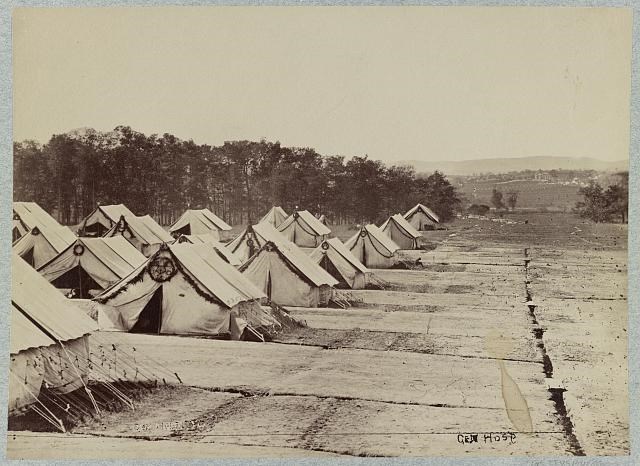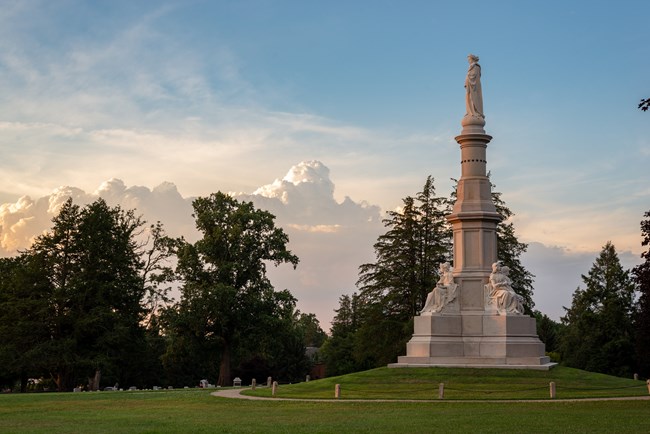Three Days in July 1863The causes of the American Civil War (or the War Between the States) go back to the beginning of the country’s history. There has always been a debate over the power of the National government vs. the power of the individual state governments. Prior to the Civil War this led some individuals to declare their loyalty to their state and not the Nation. By the 1850’s, however, the main cause of discontent was over the issue of slavery. Many people, especially in the Northern states, viewed slavery as an embarrassment in a nation founded on individual liberty. Some called for the immediate abolition of slavery throughout the country. Others called for a gradual emancipation. Most countries in Europe had already ended slavery. The Southern states, however, wanted to retain their “Peculiar Institution.” By 1860 the extremists on both sides had taken leadership positions and were in no mood to compromise. Abraham Lincoln, from the northern State of Illinois, was elected the first Republican president in November 1860. Leaders in the South had threatened to secede, or break away, from the Union if Lincoln was elected. Lincoln was opposed to slavery; but he felt as president he had no power under the U. S. Constitution to deal with slavery where it already existed. Lincoln wanted to restrict the growth of slavery. In December 1860, South Carolina became the first state to secede from the United States. Other Southern states followed. By March 1861 they had formed the Confederate States of America with Jefferson Davis as president. This new “nation” now demanded that Lincoln abandon all U. S. military posts in the new Confederacy. Lincoln refused. On April 12, 1861 the Confederates opened fire on Fort Sumter, guarding the harbor of Charleston, South Carolina. On April 14, the fort will be forced to surrender. The shooting war had begun.

Library of Congress The AftermathThe battle brought devastation to the residents of Gettysburg. When the armies marched away from Gettysburg they left behind a community in shambles and over 51,000 soldiers dead, wounded, or missing. Wounded and dying were crowded into nearly every building. Every farm field or garden was a graveyard. Most of the dead lay in hastily dug and inadequate graves; some had not been buried at all. Churches, public buildings and even private homes were hospitals, filled with wounded soldiers. The Union medical staff that remained were strained to treat so many wounded scattered about the county. To meet the demand, Camp Letterman General Hospital was established east of Gettysburg where all of the wounded were eventually taken to before transport to permanent hospitals in Philadelphia, Baltimore and Washington. Union surgeons worked with members of the U.S Sanitary Commission and Christian Commission to treat and care for the over 20,000 injured Union and Confederate soldiers that passed through the hospital's wards, housed under large tents. By January 1864, the last patients were gone as were the surgeons, guards, nurses, tents and cookhouses. Only a temporary cemetery on the hillside remained as a testament to the courageous battle to save lives that took place at Camp Letterman. 
NPS Photo The Soldiers' MonumentProminent Gettysburg residents became concerned with the poor condition of soldiers' graves scattered over the battlefield and at hospital sites, and pleaded with Pennsylvania Governor Andrew Curtin for state support to purchase a portion of the battlefield to be set aside as a final resting place for the defenders of the Union cause. Gettysburg lawyer David Wills was appointed the state agent to coordinate the establishment of the new "Soldiers' National Cemetery", which was designed by noted landscape architect William Saunders. Removal of the Union dead to the cemetery began in the fall of 1863, but would not be completed until long after the cemetery grounds were dedicated on November 19, 1863. The dedication ceremony featured orator Edward Everett and included solemn prayers, songs, dirges to honor the men who died at Gettysburg. Yet, it was President Abraham Lincoln who provided the most notable words in his two-minute long address, eulogizing the Union soldiers buried at Gettysburg and reminding those in attendance of their sacrifice for the Union cause, that they should renew their devotion "to the cause for which they gave the last full measure of devotion.." 
Library of Congress The Evolution of the BattlefieldIn 1864, a group of concerned citizens established the Gettysburg Battlefield Memorial Association whose purpose was to preserve portions of the battlefield as a memorial to the Union Army that fought here. The GBMA transferred their land holdings to the Federal government in 1895, which designated Gettysburg as a National Military Park. A Federally-appointed commission of Civil War veterans oversaw the park's development as a memorial to both armies by identifying and marking the lines of battle. Administration of the park was transferred to the Department of the Interior, National Park Service in 1933, which continues in its mission to protect, preserve and interpret the Battle of Gettysburg and the Gettysburg Address to park visitors. |
Last updated: October 6, 2022
